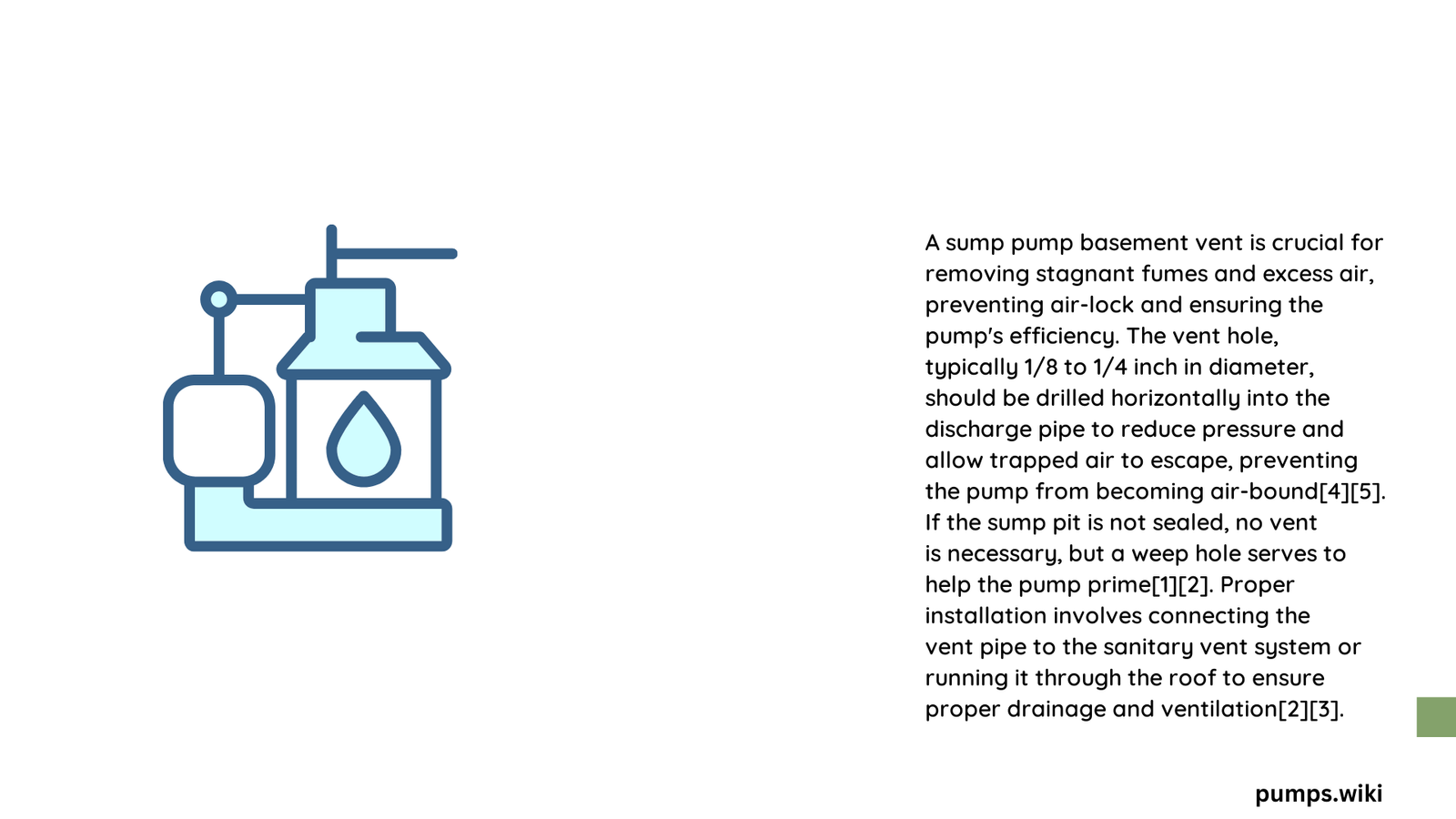Sump pump basement vents play a crucial role in managing moisture and preventing water accumulation in residential foundations. Homeowners often overlook the technical nuances of proper sump pump ventilation, which can significantly impact basement water control, air quality, and overall structural integrity. Understanding the intricacies of sump pump basement vents helps prevent potential water damage and ensures efficient drainage system performance.
What Are Sump Pump Basement Vents?
Sump pump basement vents are specialized components designed to facilitate proper water drainage and prevent air-locking in basement drainage systems. Unlike traditional ventilation systems, these mechanisms focus on ensuring smooth water flow and preventing potential blockages.
Key Components of Sump Pump Basement Vents
| Component | Purpose | Typical Specification |
|---|---|---|
| Weep Holes | Prevent Air-Locking | 3/16-inch diameter |
| Discharge Pipe | Water Removal | 1 1/4″ to 2″ ABS/DWV Pipe |
| Check Valve | Prevent Backflow | One-Way Valve |
Why Do You Need Sump Pump Basement Vents?

Moisture Control Strategies
Sump pump basement vents serve multiple critical functions:
- Water Removal: Efficiently eliminate accumulated water from basement areas
- Humidity Reduction: Minimize moisture-related issues
- Mold Prevention: Create an environment inhospitable to fungal growth
- Structural Protection: Prevent water damage to foundation and basement walls
How to Install Sump Pump Basement Vents?
Installation Best Practices
Weep Hole Placement
- Drill a 3/16-inch hole between pump and check valve
- Ensure precise positioning to prevent air-locking
- Use appropriate drilling tools and techniques
Discharge Pipe Configuration
- Select appropriate pipe diameter (1 1/4″ to 2″)
- Minimize horizontal pipe runs
- Maintain proper slope for efficient water drainage
Technical Considerations for Sump Pump Basement Vents
Local Building Code Compliance
- Verify regional requirements
- Consult professional drainage experts
- Obtain necessary permits before installation
Performance Optimization Techniques
- Regular maintenance checks
- Annual system inspection
- Monitor discharge pipe condition
- Clean weep holes periodically
Common Challenges with Sump Pump Basement Vents
Potential Issues
- Air-locking in drainage system
- Inadequate water removal
- Pipe corrosion
- Improper slope configuration
Professional Recommendations
Expert Tips
- Use high-quality materials
- Consider professional installation
- Invest in reliable pump systems
- Implement preventative maintenance schedules
Maintenance Frequency
| Maintenance Task | Recommended Frequency |
|---|---|
| Visual Inspection | Every 3-6 months |
| Comprehensive System Check | Annually |
| Weep Hole Cleaning | Bi-annually |
Cost Considerations
Investment Breakdown
- Basic Sump Pump System: $500 – $1,500
- Professional Installation: $1,000 – $3,000
- Annual Maintenance: $100 – $300
Conclusion
Effective sump pump basement vents require strategic planning, technical understanding, and consistent maintenance. Homeowners who prioritize proper installation and regular system checks can significantly mitigate water-related risks.
